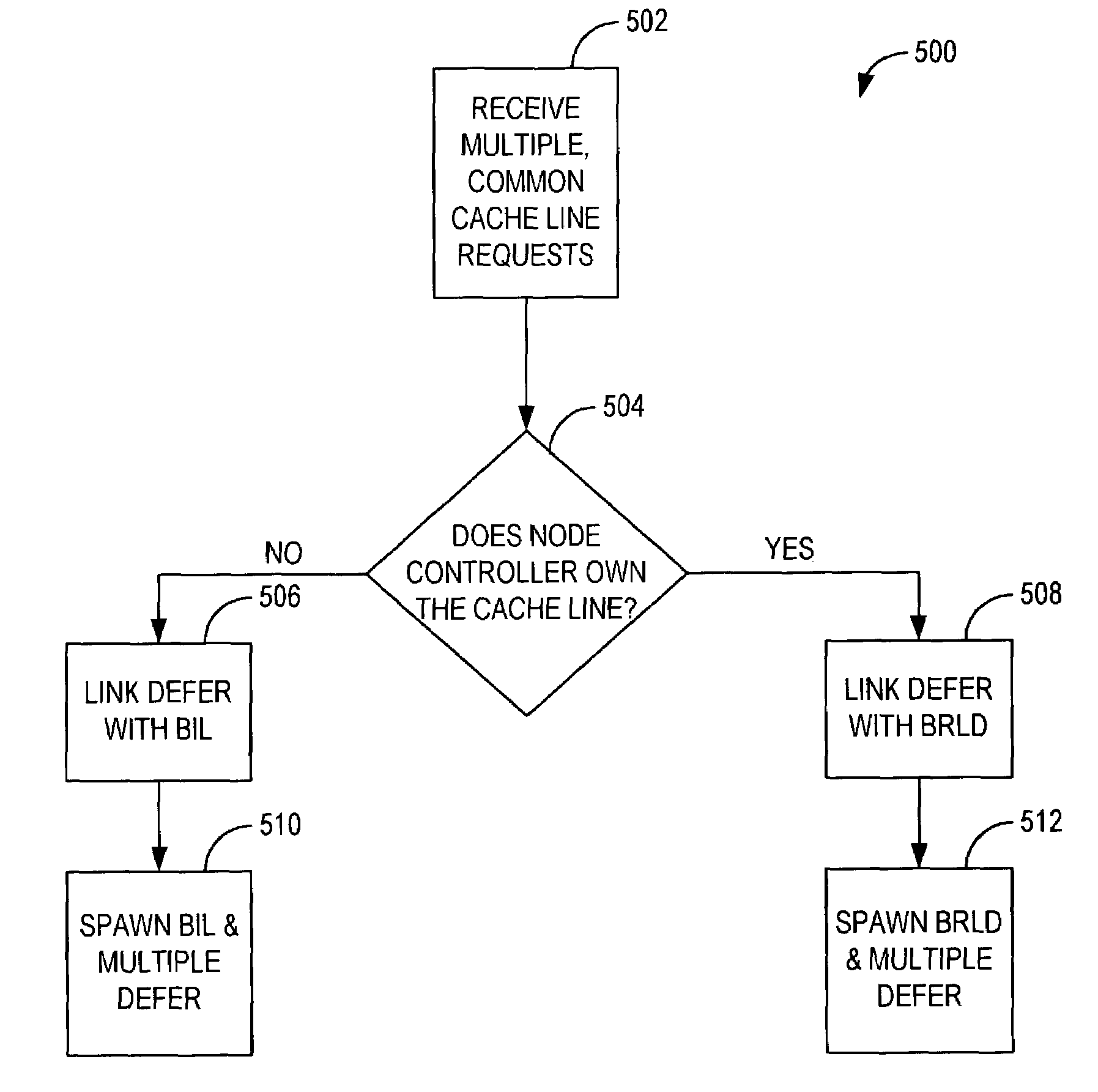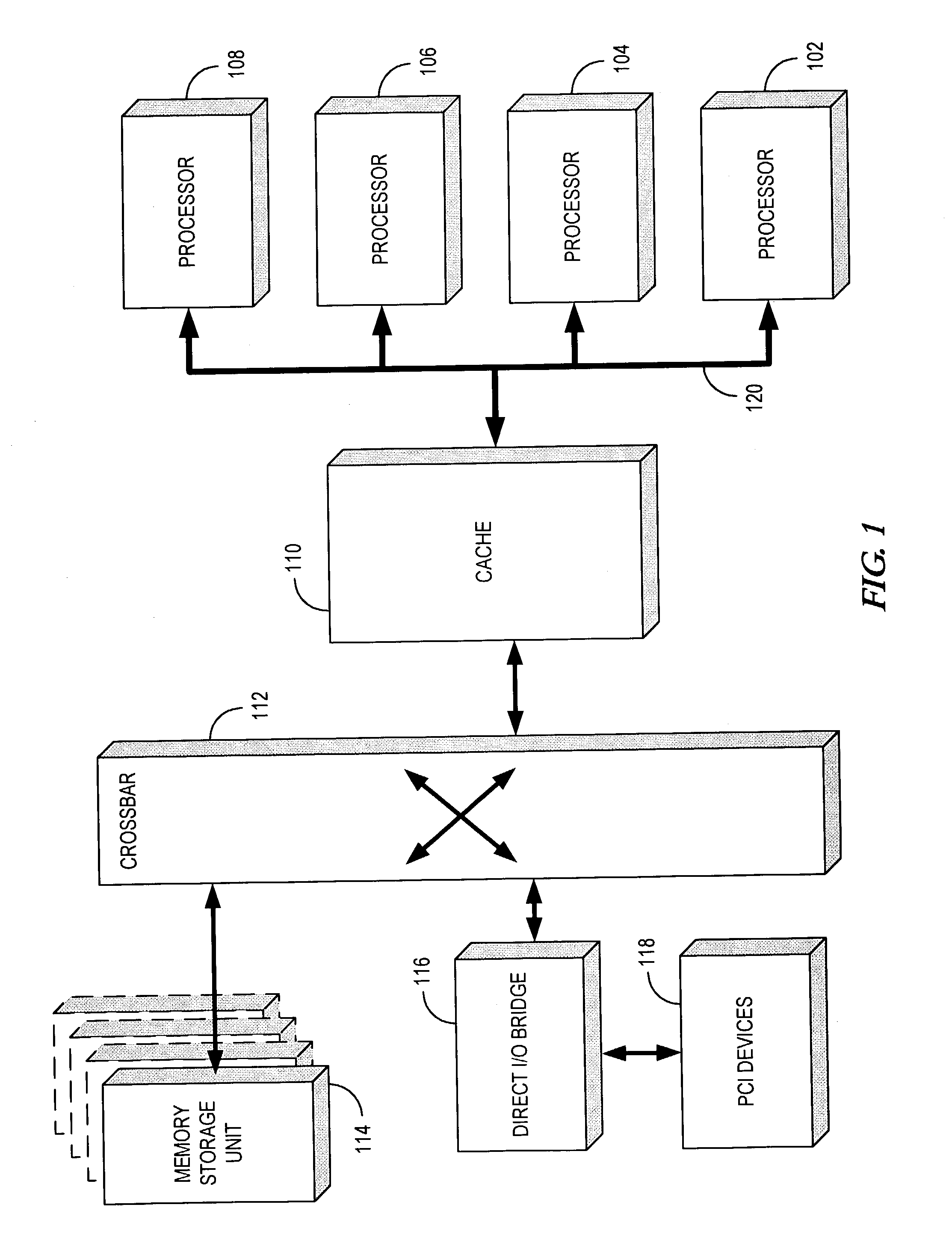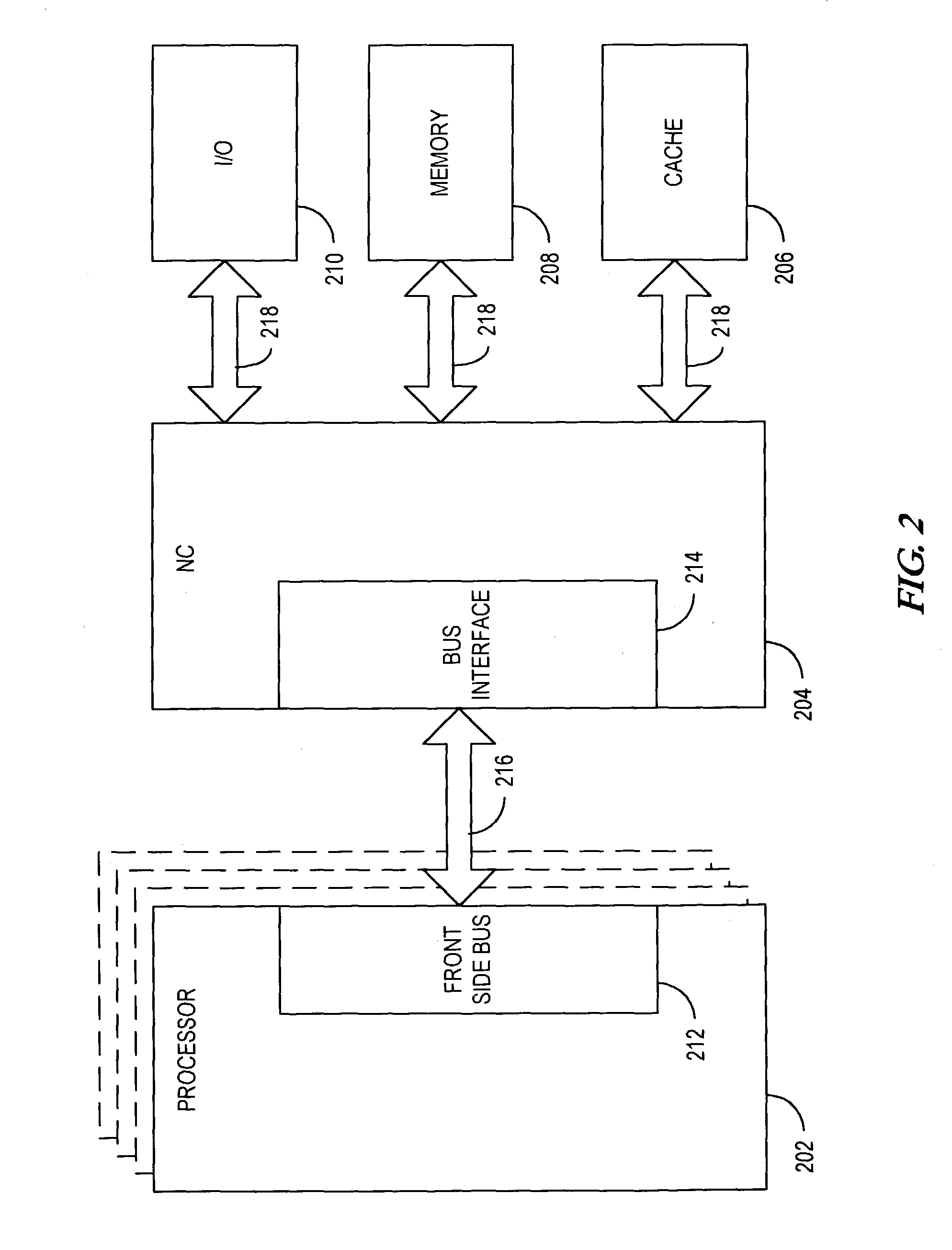Method and apparatus for spawning multiple requests from a single entry of a queue
a queue and request technology, applied in the field of outgoing queues, can solve the problems of data incoherence, scalability limitation, and threat to coherence, and achieve the effect of increasing the effective capacity of the request queu
- Summary
- Abstract
- Description
- Claims
- Application Information
AI Technical Summary
Benefits of technology
Problems solved by technology
Method used
Image
Examples
Embodiment Construction
[0021]FIG. 1 illustrates an exemplary block diagram of a processing cell in accordance with the present invention. A typical processing cell, or sub-pod, is comprised of multiple Central Processing Units 102–108 and a corresponding Cache 110. The processing units may be of the 128 bit McKinley processor family as produced by Intel Corp., the 64-bit, IA-64 Itanium family, also produced by Intel Corp., or may, for example, be of the 32-bit, Xeon processing family, also produced by Intel Corp. Each of processors 102–108 share Cache 110 through bus 120, where bus 120 may serve up to, for example, four Processors 102–108. Memory Storage Units 114 provides a shared memory pool for Processors 102–108 through non-blocking Crossbar 112. Direct IO Bridge 116 provides high-throughput access to Peripheral Component Interconnect devices 118. It should be noted that the present invention is not limited for use with only those processors listed above, but may be used with any processor that is com...
PUM
 Login to View More
Login to View More Abstract
Description
Claims
Application Information
 Login to View More
Login to View More - R&D
- Intellectual Property
- Life Sciences
- Materials
- Tech Scout
- Unparalleled Data Quality
- Higher Quality Content
- 60% Fewer Hallucinations
Browse by: Latest US Patents, China's latest patents, Technical Efficacy Thesaurus, Application Domain, Technology Topic, Popular Technical Reports.
© 2025 PatSnap. All rights reserved.Legal|Privacy policy|Modern Slavery Act Transparency Statement|Sitemap|About US| Contact US: help@patsnap.com



